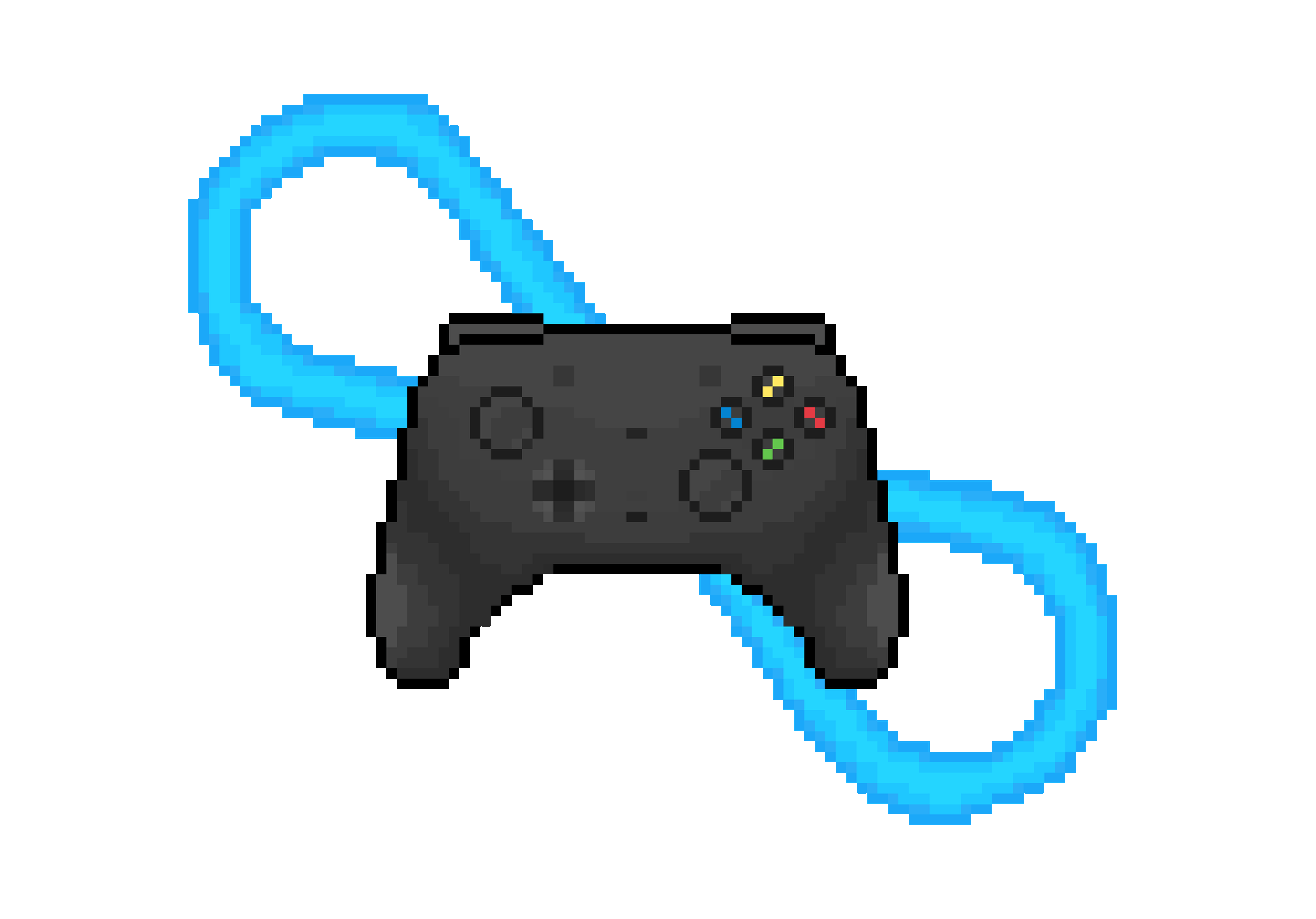Aidan’s Infinite Play 40 The Danger Of Being Too Top-Down Focused In Your PKM System LYT 11 Part 4

Hello players!
I finished the fourth week of Linking Your Thinking Workshop 11!
For those who don’t know, The Linking Your Thinking Workshop is headed by Nick Milo and teaches students over five weeks how to build a Personal Knowledge Management System that allows them to do their best. I highly suggest you take the next cohort by heading to The Linking Your Thinking Workshop. During the fourth week, we learned:
- The Four Patterns Through Which Knowledge Grows Over Time Inside of The ARC Workflow
- Three Workflows You Can Use To Grow Notes In Your PKM System
- The Dangers Of Being Too Top Down Focused
If you didn’t read the posts I created on the 1st, 2nd, or 3rd weeks of the workshop, I would recommend checking those out before diving into this one:
- Aidan’s Infinite Play 37 Exploring PKM Thinking Styles LYT 11
- Aidan’s Infinite Play 38 How To Do Bottom-Up Vs. Top Down Thinking LYT 11
- Aidan’s Infinite Play 39 Creating A Library And Home Note For Lifelong Learning LYT 11
The main thing I learned this week is the dangers of being too top-down focused in your PKM system.
In the 1st and 2nd week, I explained how one of the major insights I am making during the workshop is that I’m naturally more of a top-down thinker. I concluded that if I balance between bottom-up and top-down thinking, I can get the best of both worlds. But if I’m too top-down focused, we can run into some major issues.
To understand the problems that come with being too top-down focused, we first need to dive into:
- The Four Patterns Through Which Knowledge Grows Over Time Inside The ARC Workflow
- Three Workflows You Can Use To Grow Notes In Your PKM System
The Four Patterns Through Which Knowledge Grows Over Time Inside The ARC Workflow
According to Nick Milo, there are four different patterns through which knowledge grows over time inside the ARC workflow.
 |
Emergent
In an emergent pattern, we take notes bottom up, and eventually, we have a flash of insight connecting seemingly disparate ideas.
We experience emergence; a term in systems thinking that refers to when the whole becomes different from the sum of its parts.
Progressive
In a progressive pattern, we slowly grow a group of ideas over time as we learn more and more, but there isn’t necessarily a flash of insight where we connect seemingly disparate ideas.
Tension Resolving
In a tension-resolving pattern, we create a MOC because we hit a mental squeeze point.
The gathering of ideas resolves the tension from our disorganization and creates new ideas from many smaller notes interacting.
Output-Driven
In an output-driven pattern, we start with the end in mind and assemble notes over time.
For example, collecting and creating notes for a project, regular pieces of content, etc.
Take a moment and think about which of these patterns resonates most with you.
The two patterns that resonate most with me are tension-resolving and output driven.
This is because tension-resolving and output-driven patterns of sensemaking are more top-down, whereas progressive and emergent patterns are more bottom-up.
This will become important later on when we discuss the dangers of too much top-down thinking so keep in mind which of those patterns resonate most with you.
Three Workflows You Can Use To Grow Notes In Your PKM System
During week four, we learned about three ARC workflows that you can use to grow notes in your PKM system:
- Bottom-up
- Middle out
- Top-down.
Bottom-up thinking involves taking notes at the individual level, relating them to old notes, and then growing them over time to create something entirely new. Middle-out thinkers are consistently inconsistent with their notetaking, sometimes doing bottom-up and sometimes doing top-down. Top-down thinking involves biasing notetaking from the forest level rather than the individual trees through MOC creation (I think MOC creation is a form of tension-resolving sensemaking) or output-driven notetaking.
Every one of the workflows has sub-workflows that are most associated with that style of sensemaking that also come with their pros and cons.
The main pros of the bottom-up and middle-out thinking styles are that they are incredible for innovation. When you take notes more bottom-up, like through emergent or progressive patterns, you are more likely to come out with crazy creative ideas from making seemingly disparate connections. However, the main con of these two workflows is that while they might innovate, they don’t necessarily communicate.
Without a top-down structure, it’s easy for bottom-up and middle-out notetakers to disregard creation.
This is where top-down notetaking, my preferred style of notetaking, comes in.
The main pro of top-down notetaking is that it’s excellent for not wasting time. Because top-down notetakers are naturally more output driven, they spend more time creating than relating.
As a result, I rarely procrastinate inside my PKM system.
However, there is a danger to being too top-down focused.
The Dangers Of Being Too Top Down Focused
I consistently communicate, but do I ever innovate?
As a top-down notetaker, I spend significantly less time relating concept notes together to cause new emergent insights. As a result, I can run into the danger of communicating ideas that aren’t that novel or interesting. However, being aware of this because of LYT allows me to adapt.
The solution I have come to is to spend more purposeful time bottom-up notetaking while still biasing towards top-down notetaking.
I have done this in these ways: I practice bottom-up notetaking through:
- Creating book summaries out of books I read where I intentionally connect ideas in a more bottom-up fashion
- Spending at least 15 minutes every day processing literature notes in a more bottom-up style
I practice top-down notetaking through:
- Continuing to create a weekly YT video, blog, newsletter, and two podcasts
- Creating MOCs
By implementing these two things into my notetaking practice, I hope to have both communication and innovation.
If you also struggle to balance top-down and bottom-up notetaking, I hope you can implement these two things as well!
I’m so grateful to the LYT workshop for helping me navigate these conundrums. I have learned so much over these last four weeks about my notetaking style. I highly suggest you take the next cohort by heading to The Linking Your Thinking Workshop.
Here’s what I would like to share this week.
📸News From The Channel!
📺Latest On De YouTube - How To Memorize Effectively With Flashcards And Not Waste Hours Of Time: Do you find flashcards boring? I did, too, until I learned how to memorize effectively without wasting hours of time. In this video, I’ll show you some of the best tips and tricks I have found for doing so.
🎙️Latest On De Podcast - E22 Marc Champaign How To Change Your Life By Journaling Today: Marc Champagne is the Writer & Author of Personal Socrates (Better Questions, Better Life)Mental Fitness Strategist and the Host of Behind The Human (a Top 50 Podcast).
In this podcast, you will learn:
- The power of self-reflection
- How to find journaling prompts that resonate with you
💡My Best Insights:
📖Book - The Great Mental Models Volume 2: Volume 2 of "The Great Mental Models" provides a comprehensive collection of practical mental frameworks for understanding the world through Physics, Biology, and Chemistry. Adopting mental models into your life and learning when to use them is one of the most powerful ways to increase your ability for insight.
✍️Blog Post - The End of Organizing: This article really got in my gears. The author opens the piece with, "I hate to be the bearer of bad news, but all of the time we've spent organizing our notes was probably wasted. Instead, in the immediate future, our notes will be organized for us by large language models (LLMs) like GPT-3." The problem with this statement is that the author assumes the value of notetaking comes solely when you bring back up old ideas and use them to create new things. They treat the process of organization as synonymous with something being organized. But the process of organizing has value in itself. Read it yourself and see if you can uncover some of the blatant reductions they put forth regarding AI and organizing.
🎙️Podcast - Robert Cialdini || the New Psychology of Persuasion: This podcast dives into the seven principles of persuasion talked about in Robert B. Cialdini's book, Influence The New Psychology of persuasion. For anyone looking to get into influence, whether online or in person, this is a must listen to.
📺YouTube Video - Why You Should Spend All Of Your Money Before You Die - Bill Perkins Modern Wisdom 642: Bill Perkins believes we should die with zero dollars by the end of our life. He argues that our abilities to do things in life are in a pyramid: time, money, and health. At a young age, you have lots of time and health. In middle age, money and health. In old age, time and money. For example, hang out with the bros, or go see grandma. You can hang out with the bros forever. You can't always go see grandma. There is a memory dividend. Making a memory early allows us to gain value from remembering and talking about it for years. Therefore we should be okay with spending money early to create experiences.
